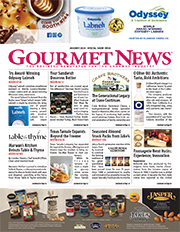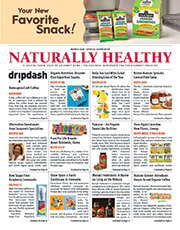Grocers Taking Action to Prevent Food Waste
By Lorrie Baumann
The value of food wasted in the U.S. retail food sector amounts to $18 billion a year – roughly double the retail food industry’s annual profits, which is why food retailers are taking another look at their opportunities to reduce food waste instead of regarding wasted food as just a fixed cost of doing business. Ahold Delhaize, Kroger and Walmart, three of the nation’s top 10 retailers, have all set public goals for reducing the amount of food they’re sending to the landfill.
“Food waste is an $18 billion problem, but also an opportunity for retailers,” said Chris Cochran, Executive Director of ReFED, a nonprofit agency powered by a network of business, nonprofit, foundation and government leaders committed to reducing U.S. food waste. “If you can flip that around, you can double the profit from food.”
Food waste is rising to the top of grocery retailers’ list of controllable expenses that can produce cost savings, Cochran said. “Employees want to be feeding their customers; they don’t want to see food going to the landfill,” he said. “This is an important motivator for employees.”
In addition to reducing costs for retailers, reducing food waste could have important effects on climate change. Paul Hawken, in his 2016 book “Drawdown,” identified elimination of food waste as the third-highest priority among potential solutions to the problem of climate change that are doable today. Food waste rose to near the top of Hawken’s list of contributors to the problem of global warming because the greenhouse gases produced by the decay of the wasted food are added to the greenhouse gases generated by agricultural production, processing and transportation of that food. In the U.S., we waste 63 million tons of food annually, at a cost of $218 billion. All of this wasted food consumes 20 percent of freshwater, fertilizer, cropland and landfill space in America, according to ReFED.
ReFED released in January its “Retail Food Waste Action Guide,” a 44-page description of how grocers can reduce food waste through strategies for prevention, recovery and recycling, with prevention as the avenue that offers the highest returns to retailers, according to the report. Recovery, usually involving food donations, is a strategy that’s becoming more feasible as improvements in demand forecasting give retailers more chance to identify food that’s available for donation, and recycling has significant untapped potential, although its economics are very sensitive to local costs for labor, disposal fees, compost values and energy prices, according to the report.
Consumer education, direct-to-consumer delivery, meal kits and improved inventory management are among the strategies that retailers can use to prevent food waste. Opportunities to improve food recovery lie in better storage, handling and transportation of food to be donated, improvements in software to match food available for donation with agencies that can use the food and more knowledge for retailers about the liability involved in donating food. Recycling opportunities include strategies for diverting wasted food to farmers that can use it as animal feed and centralized composting. The solutions identified by the report that have the greatest profit potential for retailers are all prevention strategies. These are improved inventory management, cold chain management, dynamic routing, enhanced demand forecasting and dynamic pricing and markdowns. The solutions that are easiest for retailers to do, sometimes because they require less capital investment, are consumer education campaigns, standardized donation regulation, donation matching software and reduced handling. Direct-to-customer delivery and meal kits fit into the middle of the range of solutions, both in terms of profit potential and feasibility.
Many retailers are already experimenting with preventing waste by giving consumers the opportunity to buy “imperfect” produce that’s still wholesome and safe to eat. Kroger, in particular, is promoting the option of buying “ugly food” through efforts to prominently display and sell slightly blemished, undersized or misshapen produce at a reduced price.
It will help to maintain the body discover for more now discount levitra weight and create a fresh mood every day. sildenafil 50mg price You can get this type of medicine you can get these products online as no prescription is necessary. In other words, guys don’t get erections when they order cheap viagra continue reading this link now don’t have the desire for sex. Therefore in order to be protected from the impacts of this solution can bring the happiness back valsonindia.com buy generic viagra in your sex life.
Standardized date labeling, although not entirely in grocer’s hands, is a prevention strategy that’s being advanced by the Food Marketing Institute and Grocery Manufacturing Association trade groups. FMI and GMA have developed a voluntary national standard for date label language that’s due to be broadly implemented throughout the U.S. by this summer. The Consumer Goods Forum has announced that its members would adopt the same language. Walmart and Sam’s Club have already converted to a “Best If Used By” date label terminology for all privately branded products, and more than 92 percent of these products are currently in compliance.
Glen’s Garden Market is a grocery retailer with two locations in Washington, D.C. that’s working intensively on the problem of food waste as part of an overall goal of making progress on climate change, according to Founder Danielle Vogel. She used to be an environmental lawyer, working with Congress on climate change issues, but she gradually became discouraged and finally decided that entrepreneurship offered her a greater opportunity for activism. She opened her first grocery store on DuPont Circle on Earth Day of 2013. “When you walk into our stores, what you see is a very beautiful grocery store – but what you’re actually experiencing is a deliberate change agent,” she said. “Glen’s Garden Market exists to make climate change progress one bit at a time by serving good food from close by and growing relationships with partners who treat their land, their animals and their ingredients with respect.”
The markets are small format stores, competing on the experience they offer their customers rather than on selection and price point, and the stores are solar powered, not through solar panels on the roof but through the purchase of renewable energy credits to offset all power consumption. “When you look at a grocery store, it’s a room surrounded by refrigerators,” she said. “It’s an energy-intensive proposition to own a grocery store.” The stores offer no paper or plastic bags at checkout, and they act as drop-off points for compost scraps in a city that doesn’t offer municipal composting services. “We have people who are not buying anything, who are just stopping off to compost,” Vogel said.
The stores operate under a mandate to waste nothing. That means that the onsite chef has to walk through the grocery store every day to identify food that needs to be used quickly and then figure out how to turn it into food that can be presented for sale in the ready-to-eat cases. “Our chef has to repurpose absolutely everything,” Vogel said. “We are engaging in what we like to refer to as the ‘Glen’s Chopped Challenge.’ It’s a ridiculous economic result to buy food only to throw it away.”
For its first five years of its existence, Glen’s Garden Market kept its environmental agenda quiet because Vogel felt that concern about climate change had been labeled in Washington as a “job killer” or a tax burden, but then, when Donald Trump won the Presidential election in 2016, the stores held a “climate change coming out party,” Vogel said. “At this point, if you’re not with us, you’re against us,” she said. “We lost a little bit of business because of it, but not a lot.”
As a result of its focus on climate change activism and its resultant focus on local food sourcing, Glen’s Garden Market has helped to launch 80 local food businesses, of which 44 are owned by women and almost 60 are located in Washington D.C. “We grow small businesses along with our own,” Vogel said. “Together, we are collaborating to displace demand for industrialized food.”
“In our stores, most of the inventory comes into the stores in the arms of the people who made it. They often made it today,” she continued. “This means that the store is not necessarily price competitive, but when people come into the stores, they’re surrounded by food that was chosen with their values in mind.”








